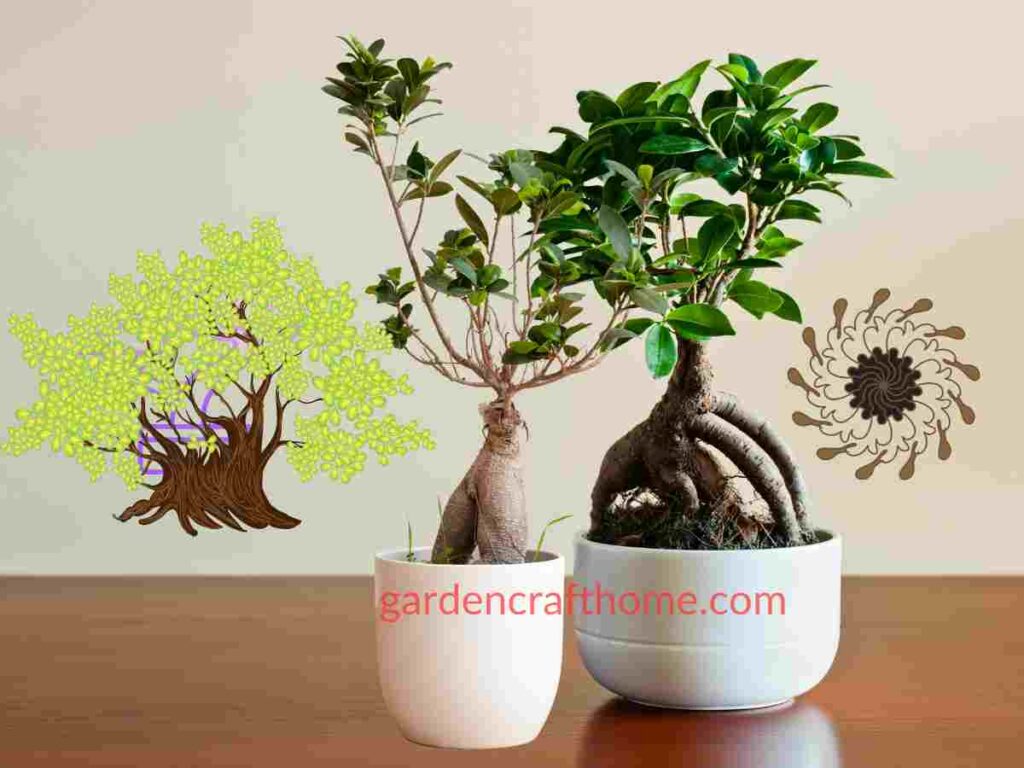Brown tips on spider plants are a very common problem. But the good news is that it’s fixable.
In my third year of caring for a snake plant, I discovered my spider plant was turning yellow, brown, and black.
In ignorance, two of my beautiful spider plants died, but I revived others, and I learned how to prevent it from happening again.
In this article, I will tell you all the causes and solutions so you can get rid of spider plant brown tips.
If you want to multiply your spider plant 👉, click here to learn how to propagate a spider plant at home.[Link]
Why Is My Spider Plant Leaf Turning Brown
The most common challenge spider plant owners have faced is seeing their spider plant tips turning to Brown.
The most common problem people have with spider plants is dealing with brown tips.
This problem can be caused by many things, making it frustrating for beginners.
They can occur individually or face two or more causes at the same time, but multiple problems can make the problem worse at the same time.
Are you Wondering why the tips of your spider plant are turning brown? Below are the most common causes.
There are several reasons why your spider plant may end up with brown tips. It’s telling you something.
Let’s see together why the spider plant has dry or brown tips.
Below are the most common causes why spider plant tips are turning brown.
- Water stress
- Over-fertilization
- Chemical/fertilizer buildup
- Too much direct sunlight [Excessive heat exposure]
- Low humidity levels
- Plant Diseases
- Bad soil
- Salt toxicity to the spider plant
- Spider plant is Root bounded
The following guide will assist you in determining what is producing brown tips on your spider plant and what you can do about it.
Bad Soil Causes Spider Plant Brown Tips
Soil mixes that are poor quality or do not have adequate drainage are very problematic.
They retain too much moisture and tend to cause salts, heavy metals, and chemicals to build up more quickly.
Heavy soils also make eliminating these toxins difficult, worsening the problem.
Bad soil also causes water luggage in a port, and water luggage can lead to root rot.
When the soil is bad, the plant can’t breathe fine and can’t extract nutrients from the soil because the soil is the base of every plant nutrient.
A healthy plant is known as a healthy soil rich in nutrients. Make sure to buy good potting soil for your spider plant to make their leaves flourish well. [aff pro]
Also, read how to take care of a spider plant. [Link]
Low Humidity Levels Causes Brown Tips On A Spider Plant
Humidity levels have a profound effect on plant health. If you see the tips of your plant’s leaves turning brown, but the leaf margin appears green, low humidity could be the reason.
Spider plants need high humidity to thrive. Spider plants can tolerate low humidity, but very dry air can cause dehydration and browning of the leaf tips.
In low-humidity environments, your spider leaves will dry out, and their tips will turn brown.
Therefore, during winter, be sure to place your spider plant indoors in a room with high humidity.
During the summer, you can keep the humidity level high by watering it on time, grouping it with other indoor plants or using a humidity tray.
WATER STRESS CAUSES BROWN TIPS ON A SPIDER PLANT
Water stress is one of the major problems in spider plants and other indoor plants for beginners to maintain.
Water stress is suffering your plant with water either by over-watering or under-watering them.
Over- or under-watering, or going from one extreme to another, can also cause brown tips on spider plants.
Too much will clog them, and too little will cause the leaves to dry out, stressing the plant. Water stress is divided into two.
Over-Watering Causes Brown Tips On A Spider Plant
When overwatering, excess water causes root rot, which blocks water flow and other basic nutrients from getting to the plant, resulting in brown leaf tips.
Without solving the problem, it will kill your precious houseplant. Ensure you don’t give it too much water and that the soil is well drained.
To avoid over-watering your plants, You can touch the soil to check if it is still moist or too dry. To learn how to check the moisture level of soil, click here.
You can also buy a Soil Moisture level Meter for plants. [ aff pro]
I will also advise you to ensure your pot or planter has a drainage hole that can eliminate excess water.
Little water will look over-watering if your pot or planter doesn’t have a drainage hole.
If you don’t know how to select the best plantar in the market, click here now to read how to choose a planter.
Additionally, a pot or planter must be well prepared before planting, so your plant won’t suffer loss.
Click here to learn how to prepare a planter for planting.
Under-watering Causes Brown Tips On A Spider Plant
Letting spider plant soil dry out too long can create stress, showing in brown tips and streaks along the leaves.
Use a moisture level meter to check the soil moisture level [aff pro] or deep your two fingers in the soil to check if the soil is dry before washing.
If your plant is exposed to too much sunlight, the water will dry quickly, which will cause the spider plants to lose water.
You should water your spider plant once a week and never water on a routine.
Over-Fertilization Causes Brown Tips On A Spider Plant
Over-fertilization means feeding a plant with too much fertilizer. Too much fertilizer can cause any plants to depreciate in production.
Salt buildup from excessive fertilization is also a common cause of leaf browning in spider plants.
Giving your spider plant too much fertilizer will cause it to become toxic and could even damage its roots.
Solution: A quick solution to the over-fertilization problem is to stop the fertilization process and repot your plant into fresh soil.
Stop fertilization and flush the soil with clean water to remove salt accumulation stored in the soil.
You should only feed your spider plant with fertilizer for three months during the growing season.
Use a diluted, balanced, water-soluble fertilizer to feed your spider plant [aff pro]. Don’t go too far!
Some houseplants are not heavy feeders like snake plants. Click here to read about fertilizing snake plants the right way.
Too Much Direct Sunlight Or Excessive Heat Exposure Causes Brown Tips On A Spider Plant
Every plant needs sunlight to survive, but indoor plants do not need too direct sunlight as the heat can burn their leaves.
Direct sunlight is bad for some plants, as discussed in my previous article concerning bonsai tree care. Click here to read more about caring for a bonsai tree.

Your spider plant needs sun to grow healthily, but it won’t appreciate direct sunlight because Direct sun may also burn the leaves.
It is because the soil dies out too much or too quickly, depriving it of necessary moisture.
Spider plants do best in environments with bright indirect light and well at low light levels.
Infection Causes Brown Tips On A Spider Plant
You may give your spider plant the right amount of water with the right amount of sun and find that it still has leaves with dry tips.
Spider plants turning Brown could be a sign of infection or disease that the spider plant is facing.
It might result from insects or parasites feeding on the plant, or you have watered it with bad water.
The best incent killer for houseplants. [aff pro]
Rootbound is also a major problem that causes spider plants to look sick or infected.
Leaf blight is a disease that usually affects plants when the environment is too humid or hot.
I advise Keep an eye on the leaves. You can check if it is this disease because the brown spots will turn black.
Did you know spider plants can be kept on a hanging planter? I have made a beautiful one for you.
Click here to learn how I made my beautiful hanging planter at home With common home items.
Root Bound Causes Brown Tips On A Spider Plant
Another factor that can cause tips to become dehydrated and brown is when a spider plant becomes heavily Rootbound.
They like to be nice and warm in a pot, but when the roots become too compact, there isn’t enough soil to provide the necessary moisture and nutrients.
Suppose your spider plant has been growing for a while, is getting large, and always needs water. In that case, it is probably Rootbound and needs to be repotted or divided.
Remove the spider plant from the pot and examine the fleshy tuberous roots.
If the root ball has mostly roots and little soil, cut the root ball into quarters with a sharp knife and place a single division back into a clean pot of the same size with fresh potting soil.
Pot the other divisions to make new plants for yourself or friends. Click here to learn how to report a spider plant correctly.[Link]
Salt Toxicity To The Spider Plant
A salt buildup can create myriad problems for spider plants, including brown tips.
It can damage plant roots and tissues and prevent them from absorbing moisture. Salts also cause dehydration, no matter how regularly you water.
This buildup comes from water softener salts or applying too much chemical fertilizer.
If you see crusty white residue starting to form around the edges of the pot, on the surface of the soil, or around the drainage holes, this is probably a problem.
Related Post: How To Build A Cinder Block Planter Box
Chemical or Fertilizer Buildup Causes Brown Tips On A Spider Plant
Tap, well water, and synthetic fertilizers contain various substances that can harm plants.
Elements like minerals, heavy metals, chlorine and fluoride build up over time and tend to create a brown or orange slime around the pot or on the floor.
Spider plants are sensitive to these chemicals; when they build up, they can cause damage, such as brown tips.
Water is hard when extra minerals and other elements are not filtered out.
For example, the one from the tap can be defined as hard because it is rich in limestone and is not always suitable.
Using hard water to water your spider plant can cause dry tips because these minerals from the water build up in the soil.
It can lead to either having too acidic soil or providing the plant with nutrients, perhaps too many, that it does not need.
If you know your tap water is very hard, try using distilled water at least once a month, the one that comes out of the air conditioner, so to speak, or rainwater.
This way, you can purify the soil instead of immediately repotting your plant.
How To Solve Brown Tips On Spider Plants
After assessing what might be causing your spider plant’s brown tips, the next step is to fix it. Here are my best tips for solving any problems you’re having.
Use Well-Drained Potting Soil For Your Spider Plant.
One of the most proactive steps to prevent brown tips on spider plant is to ensure it is in a good-quality soil mix.
Choose one that drains quickly and doesn’t contain additives like synthetic fertilizers or moisture-retaining chemicals. [aff pro]
You can also make your own by combining two parts: coir or peat moss with 1 part perlite or pumice and adding a handful of worm castings.
Related post: click here to read the best soil for snake plants.
Ensure Adequate Watering For Your Spider Plant.
Properly Watering spider plants is also very important to prevent brown tips.
Never water so much that it makes them soggy or damp, but avoid prolonged dry periods.
Rather, let them dry two inches before adding more. Using a moisture gauge or your finger, you can determine whether it’s time.
Water slowly and deeply, then allow any excess to drain from the bottom. Using a pot with drainage holes is very important not to leave them in water.
Use Distilled Water Or Rainwater For Your Spider Plant.
The type of water you use can also be a determining factor.
Rainwater and distilled water are the best options and do not contain the salts, metals or chemicals in tap or well water. So I recommend getting a rain barrel.
You can even use snow in winter; it’s the same as rainwater. Be sure to let it melt and warm to room temperature first.
Leaving tap water for 24 hours allows the chlorine to evaporate. But fluoride and other chemical compounds don’t evaporate, so they can still cause problems.
Related Post: click me to learn how to water a spider plant and when to water them.[Link]
Fertilize Your Spider Plant Correctly
When it comes to fertilizers, the easiest way to avoid chemical and salt buildup is to use a natural organic fertilizer instead of synthetic brands.
Click here to learn how to make an organic fertilizer.
An excellent option is a balanced all-purpose or water-soluble granular fertilizer, such as compost tea and fish emulsion.
But even with natural products, using less than overusing them is better.
Apply granules no more than once a season and dilute liquid alternatives monthly or per season for optimal effects.
Feed them only in spring and summer and stop completely in fall and winter.
Check the soil for mineral buildup. Avoid over-fertilizing and flushing the soil every few months to prevent excess fertilizer salts from building up in the soil.
Consider repotting or start watering with distilled water.
Rinse The Floor Of Your Spider Plant
If you observe any orange-brown color or something white crust forming, the best thing to do is rinse the floor.
You can do this with pots with well drainage holes in the bottom.
Start by placing it in a large besan or sink, slowly but steadily releasing the rain or distilled water through the pot. Use at least four times the volume of the pot.
When you’re done, let it sit until all the excess drains off, and never let the pot soak.
Related post: click here to read how to water the bonsai tree correctly.
Check The Level Of Sunlight Your Spider Plant Is Receiving.
Spider plants need a lot of sunlight, but excessive direct sunlight can cause the leaves to be born and brown.
You can keep your spider plants at the window or veranda so they will receive indirect sunlight.
Remember sunlight is good but excess of it to our house plant causes problem.
The insufficient supply of sunlight also weakens spider plants. Lighten your room with electric bulbs if you intend to keep your spider plant inside.
In summary, place your plant in a bright area or indirect sunlight. If you want the plant to stay outside, you can change its position frequently if the sun is much depending on the season.
Check Your Spider Plant’s Environment.
The spider plant lives in a semi-humid environment with temperatures between 13-25°C.
If it is located near an air conditioner or heater, it could cause yellow leaves and brown the tips of your spider plant.
Check The Humidity Level In Your Spider Plant.
Your spider plant’s soil should be moist but not wet. Immersion will cause the plant to dry out.
Overwatering will cause root rot. Both of these problems can lead to yellow to brown leaves.
Should I Cut Off The Brown Leaf Tips On A Spider Plant?
There is no harm in leaving the brown tips on your spider plant. It will cause no harm to your plants. I only see that it makes the plants look dirty and unpleasant.
You are also free to cut them off if you don’t like the color. The choice is yours. Cutting them off with scissors or pronouns would cause a wound and produce sap.
Can the sap of spider plants harm my cat? If you want to know if spider plants are toxic to cats, click here.[Link]
To avoid the plant’s sap, use your hands to break up the brown tip still, it gets to the green part.
Using scissors will also injure the plant and cause another brown tip but in a little way.
Can Brown Tips Kill My Spider Plant
Brown tips will not kill your spider plant. The brown tips on your spider plant leaf indicate something is wrong with the spider plant.
The Brown leaf appearing on your spider plant will only kill your spider plant if you continue to ignore them.
If you fail to detect the cause of the brown tips on your plant, your spider plant may die over time, but it will take a month.
If you don’t know the cause of the brown tips, you should stop doing things like minimizing fertilization to see the health of your spider plant again.
Whenever you notice yellow on your spider plant, you should ask yourself what you have deprived your spider plants or if you are overfeeding them.
Check those possible causes to identify what was wrong with your plant. If the article helped you, share it with your friends.
Conclusion
Brown tips on spider plants indicate that your spider plant is suffering from certain things.
Avoid over-watering or under-watering your potted plants, which could lead to water luggage. Ensure your pot has a drainage hole, and use the right soil.
Don’t keep your spider plant in direct sunlight. Make sure the light is indirect for proper photosynthesis and to avoid leaving burn.
Avoid over-fertilization and keep your plant in a good hummus environment at room temperature. Avoid air conditioner or heater.
Click here to learn the benefits of snake plants in our room or environment.





